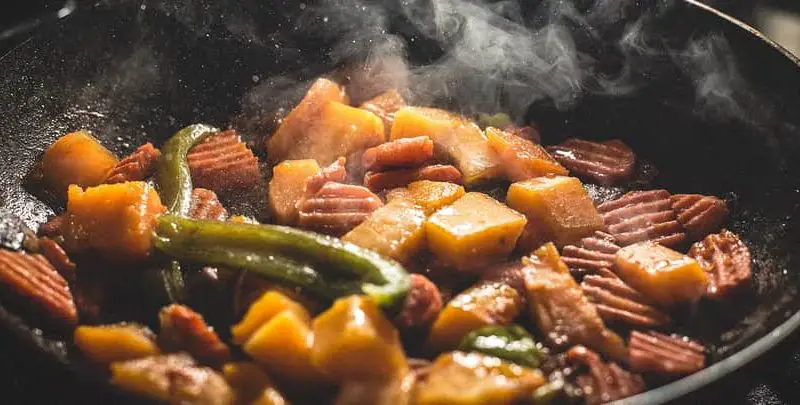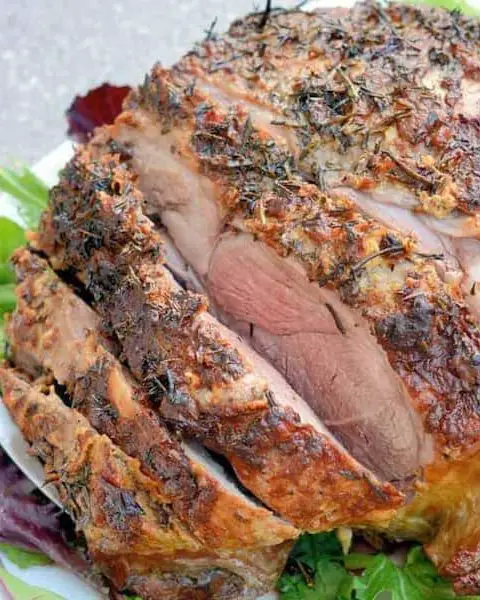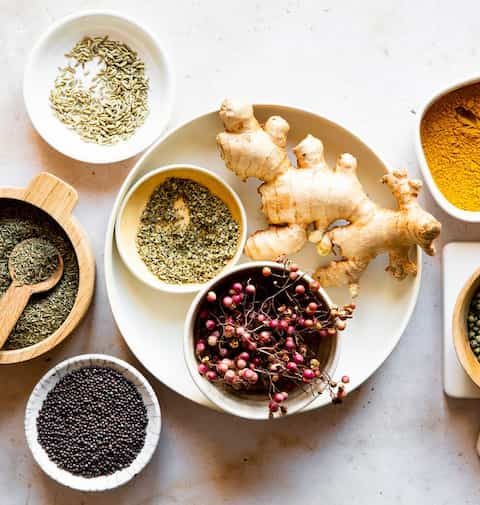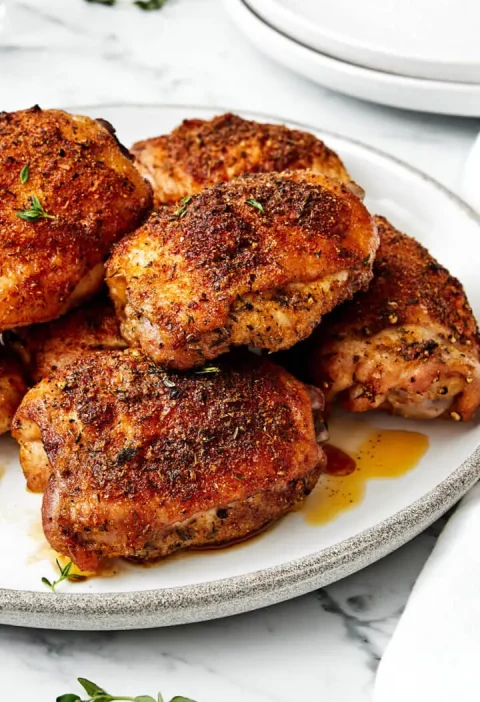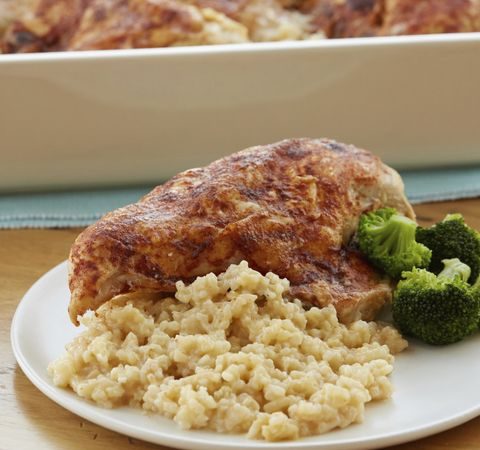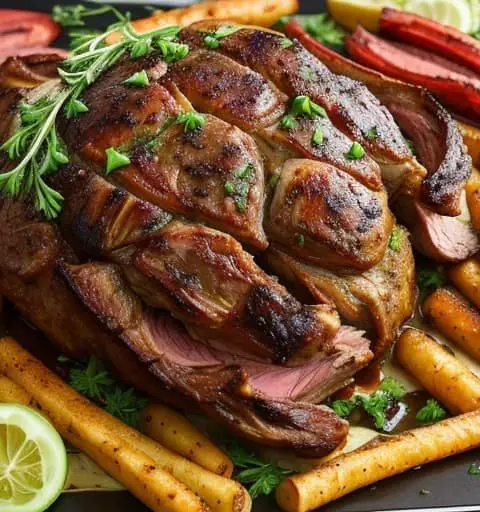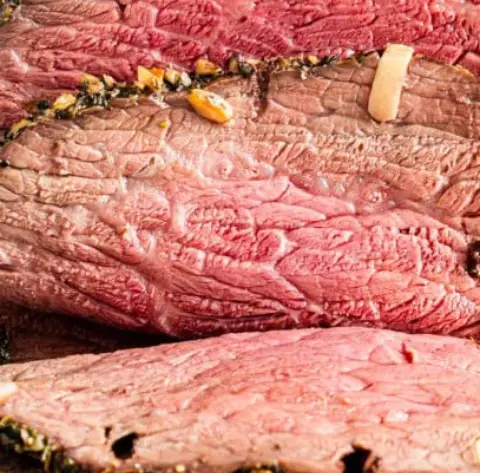Cooking is both an art and a skill, offering a way for everyone, from beginners to seasoned chefs, to explore, improve, and share their food. Knowing key cooking methods and techniques is crucial for success in the kitchen.
This guide covers 18 essential techniques every chef should know, aimed at enhancing your cooking skills.
1. Baking
Baking is a method of cooking food by using prolonged dry heat, typically in an oven, without direct exposure to flames. This technique is most often used for bread, pastries, cakes, and other desserts, but it can also be applied to savory dishes like lasagna or casseroles. The key to baking is understanding how different ingredients interact under heat, which can affect the texture, flavor, and appearance of the dish.
Perfecting Your Baking Technique
- Preheat your oven to ensure even cooking.
- Measure ingredients accurately to maintain the correct ratios.
- Use the right bakeware, as material and size affect the outcome.
Popular Baking Recipes
- Mary Berry Lemon Curd
- Mary Berry Banana and Walnut Loaf
- Mary Berry Shortcrust Pastry
- Mary Berry Chocolate Chip Muffins
2. Roasting
Roasting involves cooking food in an oven or over a fire, using indirect, dry heat that surrounds the food, allowing it to brown and develop a crispy exterior. This method is ideal for meats, vegetables, and certain fruits, creating complex flavors and textures.
Tips for Successful Roasting
- Season well to enhance flavor.
- Use a roasting rack to allow heat circulation around the food.
- Baste meats periodically to keep them moist.
Popular Roasting Recipes
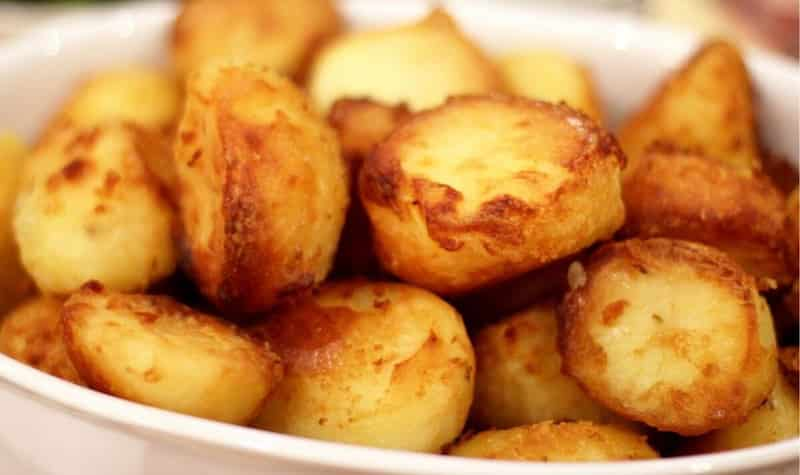
3. Grilling
Grilling is a technique that cooks food by applying direct heat from below. It’s perfect for meats, vegetables, and even fruits, offering a smoky flavor and charred texture that’s hard to replicate with other methods.
Mastering the Grill
- Preheat your grill to ensure food doesn’t stick and gets proper grill marks.
- Clean the grill grate before and after cooking to prevent sticking and ensure hygiene.
- Control the heat to avoid burning; use different zones for direct and indirect grilling.
4. Sautéing
Sautéing is a quick cooking method that uses a small amount of oil or fat in a shallow pan over relatively high heat. It’s ideal for cooking smaller or thin pieces of food, and it’s a technique that emphasizes speed and preservation of texture and color.
Sautéing Like a Pro
- Use a pan that conducts heat well, such as stainless steel or cast iron.
- Keep the food moving by tossing or stirring to ensure even cooking.
- Manage your heat to prevent burning while achieving a golden-brown color.
5. Boiling
Boiling is a basic cooking method that involves cooking food in boiling water. It’s used for pasta, vegetables, eggs, and more. While boiling is straightforward, controlling the temperature and timing can make a significant difference in the food’s texture and nutritional content.
Boiling Tips for Better Results
- Use a large pot to give the food plenty of room to move.
- Salt the water for flavor.
- Monitor the pot to avoid overcooking, especially with delicate items like vegetables.
Popular Boiling Cooking Method Recipes
6. Simmering
Simmering is a method similar to boiling but at a lower temperature, where the liquid barely bubbles on the surface. It’s a gentle cooking process perfect for soups, stews, and sauces, allowing flavors to meld and meats to become tender without disintegrating.
Techniques for Effective Simmering
- Adjust the heat to maintain a gentle simmer; vigorous boiling can break down delicate ingredients.
- Cover the pot to retain moisture and heat, or leave it uncovered to reduce the liquid.
- Stir occasionally to prevent sticking and promote even cooking.
Popular Simmering Recipes
7. Braising
Braising involves cooking food slowly in a small amount of liquid in a covered pot. This method is excellent for transforming tougher cuts of meat into tender, flavorful dishes. It combines both wet and dry heat, starting with a sear to develop flavor and finishing with a slow simmer in liquid.
Mastering Braising
- Brown your ingredients first to develop deep flavors.
- Use a tight-fitting lid to keep the steam and moisture contained.
- Choose the right liquid (broth, wine, water) to complement the main ingredient.
Popular Braising Cooking Method Recipe
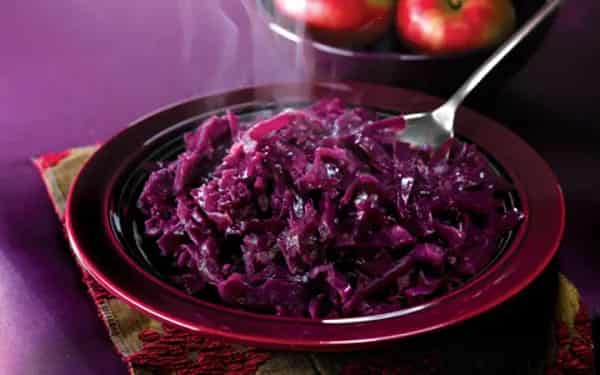
8. Poaching
Poaching is a gentle cooking technique that involves submerging food in a liquid at a low temperature. It’s ideal for delicate foods like eggs, fish, and fruit, as it preserves their texture and shape while infusing them with flavor.
Poaching Perfection
- Keep the liquid at a gentle simmer; boiling can break apart delicate foods.
- Add aromatics like herbs and spices to the poaching liquid for added flavor.
- Use a thermometer to monitor the liquid’s temperature for precise cooking.
Popular Poaching Cooking Method Recipes
9. Steaming
Steaming cooks food with the steam from boiling water, preserving nutrients and colors, especially in vegetables and seafood. It’s a healthy cooking method that results in tender and moist dishes without the need for added fat.
Tips for Successful Steaming
- Use a steamer basket to keep the food above the boiling water.
- Cover the pot to trap the steam and cook the food evenly.
- Don’t overfill the pot with water to prevent boiling water from touching the food.
10. Stir-Frying
Stir-frying is a fast cooking technique popular in Asian cuisine, where ingredients are quickly cooked in a small amount of very hot oil while stirring continuously. It’s perfect for making meals that retain the crunch and nutritional value of vegetables, along with the tenderness of meats.
Stir-Frying Strategies
- Use a wok to take advantage of its high sides and even heat distribution.
- Cut ingredients uniformly to ensure even cooking.
- Prepare all ingredients before cooking, as stir-frying is done at high heat and speed.
11. Frying
Frying is a popular cooking method that involves submerging food in hot oil. It’s divided into two main types: deep frying and shallow frying. Deep frying cooks food quickly and evenly, resulting in a crispy texture, while shallow frying is suited for smaller, thinner pieces of food.
Keys to Successful Frying
- Maintain oil at the right temperature to ensure crispiness without absorbing too much oil.
- Choose the correct oil with a high smoke point to prevent burning.
- Drain fried foods on paper towels to remove excess oil.
Popular Frying Cooking Recipes
12. Blanching
Blanching is a technique where food is briefly immersed in boiling water and then quickly cooled in ice water. This method is often used for vegetables, to preserve color, texture, and nutritional value, or to prepare them for further cooking.
Blanching Basics
- Boil water generously, adding salt to enhance flavor.
- Use an ice bath to stop the cooking process immediately.
- Time carefully to avoid overcooking; vegetables should remain crisp.
13. Broiling
Broiling is a method that uses direct radiant heat from an overhead source. It’s similar to grilling, but the heat source is above rather than below. This method is excellent for quickly cooking thin cuts of meat, fish, and vegetables, and for adding color and flavor to the surface of dishes.
Broiling Tips
- Watch closely, as broiling can quickly go from perfect to burnt.
- Adjust the rack height to control the intensity of the heat on the food.
- Preheat the broiler to ensure a good sear and caramelization.
14. Glazing
Glazing involves applying a sauce or marinade to food towards the end of cooking, which then becomes a glossy, flavorful coating through caramelization or reduction. It’s a great way to add depth and finish to meats and vegetables.
Glazing Techniques
- Use high-quality glazes that balance sweetness, acidity, and umami.
- Apply glazes towards the end of cooking to prevent burning.
- Baste frequently to build up layers of flavor.
15. Marinating
Marinating involves soaking food in a seasoned liquid (marinade) to enhance its flavor and, in some cases, tenderize it. This technique is essential for adding depth and interest to dishes, particularly meats and vegetables before cooking.
Effective Marinating
- Choose the right marinade with a balance of acid, oil, and seasonings.
- Marinate in the fridge to keep food safe.
- Allow enough time for flavors to penetrate, but not so long that food becomes mushy.
16. Brining
Brining is the process of soaking food, particularly meat, in a solution of saltwater (and often sugar and spices) before cooking. It enhances juiciness through osmosis and can improve texture and flavor.
Brining Basics
- Use a balanced brine solution to not overpower the food.
- Brine for the appropriate amount of time—too long can make the food too salty.
- Rinse and pat dry before cooking to prevent an overly salty exterior.
17. Fermenting
Fermenting is a technique that allows food to undergo controlled microbial growth and enzymatic conversions. This process not only preserves the food but also enhances flavors and can contribute to gut health. It’s used in making bread, cheese, yogurt, and fermented vegetables like kimchi and sauerkraut.
Fermenting Tips
- Keep everything clean to avoid bad bacteria.
- Control temperature and time according to what you’re fermenting.
- Be patient, as good things take time to develop.
FAQs
What Is the Difference Between Baking and Roasting?
Baking and roasting both involve cooking food in an oven, but they differ mainly in the types of foods they’re used for and the resulting textures. Baking is typically used for bread, pastries, cakes, and other desserts, focusing on a gentle heat to cook the food evenly inside and out. Roasting is applied to meats and vegetables, using higher temperatures to create a browned, flavorful crust while keeping the interior moist.
How Do You Know When to Use Sautéing vs. Stir-Frying?
The decision between sautéing and stir-frying comes down to the cooking method and the final texture desired. Sautéing involves cooking food quickly in a small amount of oil or fat over medium to high heat, ideal for softer or thinner cuts of meats and vegetables where a light browning is desired. Stir-frying, on the other hand, uses high heat and constant movement to cook food even faster, typically in a wok, making it perfect for creating crisp, vibrant dishes with a mix of ingredients cut into bite-sized pieces.
Can Marinating Meat Too Long Make It Tough?
Yes, marinating meat for too long can actually have the opposite effect of tenderizing and lead to tougher meat. This is because the acids in marinades can begin to break down the proteins in the meat too much, resulting in a mushy outer layer and a tougher overall texture. The optimal marinating time varies depending on the type of meat and the marinade used but generally ranges from 30 minutes to overnight.
What Are the Benefits of Fermenting Food?
Fermenting food offers several benefits, including enhanced flavor, increased preservation, and potential health advantages. The fermentation process creates unique, deep flavors that are not achievable through other cooking methods. It also naturally preserves food, extending its shelf life. Additionally, fermented foods are rich in probiotics, beneficial bacteria that can improve digestion and overall gut health.
How Does Blanching Affect the Nutritional Content of Vegetables?
Blanching can affect the nutritional content of vegetables in two main ways: by leaching water-soluble nutrients into the boiling water and by halting enzymatic action that can lead to nutrient loss over time. While some vitamins and minerals may be reduced during the blanching process, it can also help preserve the color, flavor, and texture of vegetables, making them more appealing to eat. To minimize nutrient loss, blanch vegetables for the shortest time necessary and consider using the leftover water for soups or stocks to take advantage of any leached nutrients.
Final Words
Mastering these 17 essential cooking methods and techniques will significantly enhance your culinary repertoire, allowing you to tackle a wide range of recipes and ingredients with confidence. Each method offers unique flavors, textures, and experiences, encouraging continual learning and exploration in the kitchen. Whether you’re searing the perfect steak, fermenting homemade kimchi, or baking a decadent cake, the joy of cooking comes from the journey as much as the destination. Keep experimenting, tasting, and enjoying the process—your culinary adventures are just beginning.

